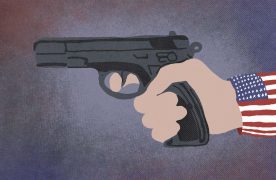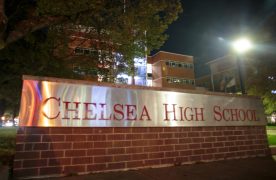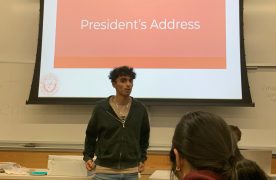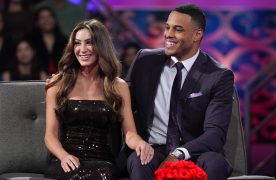He’s coming. Start the countdown now 197 days.
That’s how long it will take for the inevitable to occur for what may be the media circus to end all NBA media circuses. There are just 197 days until LeBron is unleashed.
His games this winter are televised in Ohio. He sold out the Gund Arena in Cleveland during an appearance there. LeBron James, a high school senior from Akron, Ohio, is almost a shoe-in to join the Memphis Grizzlies as the top pick in the 2003 NBA Draft, as long as the Grizzlies continue to play like a CYO team.
James is a phenomenal player perhaps the next coming of Michael Jordan. Which is nice … you, know, if that’s what matters to you. I have a bit of a different viewpoint. I’m not about to toss my chips to the center of the table and bank on James rolling a seven. Actually, I’m kind of concerned that he got into the casino.
Phrased another way, I’m not sure drafting high school players is really good for the game.
In the history of the NBA, 21 high school players have been drafted. Seventeen of those 21 have made the leap since 1995, and I could chop one-and-a-half fingers off of my hand and still be able to count how many of those 17 have made a considerable impact so far: Kevin Garnett (1995 No. 5 to Minnesota), Kobe Bryant (1996 No. 13 to Charlotte) and Tracy McGrady (1997 No. 9 to Toronto). Jermaine O’Neal (1996 No. 17 to Portland) gets half of a finger because he’s finally starting to be a significant player.
Most of the rest of the group can be filed under ‘Who?’: Korleone Young (1998 No. 40 to Detroit), Jonathan Bender (1999 No. 5 to Toronto), Leon Smith (1999 No. 29 to San Antonio).
Based on the preceding, I think we can rule out ‘talent overwhelmingly superior to college players’ as a reason for maintaining draft eligibility for high school kids. The good player-to-bust ratio of high school players seems about the same for those who went to college.
The main reason for not permitting high school kids to be drafted by NBA teams is competition, both at the NCAA and NBA levels.
For instance, what would have happened had Kobe Bryant signed with the University of North Carolina rather than the L.A. Lakers and played in Chapel Hill just for a couple of years? The Tar Heels might have two more national championships right now. What if Tyson Chandler and Eddy Curry were playing for major college programs right now instead of looking awkward on the NBA court? I wouldn’t mind watching those two seven-footers face off in the NCAA title game.
Instead, the NCAA is missing out on prime talent while the prime talent misses out on important development time. Hence, the NCAA doesn’t put out the best product and the NBA doesn’t, either.
The NBA, since latter the half of Michael Jordan’s reign in Chicago, has progressively gotten uglier. A combination of slow-down-the-game strategy and lack of talent has led to sloppy play and a three-time championship team with two real players on it.
It’s about time the NCAA and NBA got together to improve their respective lots. The NBA draft must be limited to players who have played at least a season-and-a-half at a junior college or four-year institution. A year-and-a-half, though it’s no small commitment, is a fair amount of time to expect a player to contribute to get himself ready for the level of play of the NBA and to contribute to the quality of play of both the NCAA and NBA. This would not affect many other players who leave early, as the draft record shows that most athletes who go to college stay for at least two years.
I hesitate to make the college commitment two years, keeping in mind players who begin their careers mid-season. If the minimum were two years, these players would end up spending two-and-a-half years at school to get past the requirement, half-of-a-season more than their counterparts who start their college careers in the fall. One-and-a-half seasons is plenty.
Allowing the requirement to be fulfilled at junior colleges would benefit those athletes whose grades are not up to par with major college standards. True, these athletes might miss out on the glory of being a collegiate champion, but that’s not my fault. Maybe they should have studied more.
Of course, I would be remiss if I didn’t mention the main reason why the NBA draft rules haven’t changed in quite a while: money. The NBA is not interested in the quality of NCAA play or player development outside of what the league itself does. The NBA is interested in the NBA, specifically the NBA’s bank account. Also, I wouldn’t be surprised to see some kind of contract lawsuit filed on behalf of an 18-year-old player forced to go to college rather than bring down seven figures as a pro athlete.
But maybe everyone involved could use a change of mindset.
This is an account occasionally used by the Daily Free Press editors to post archived posts from previous iterations of the site or otherwise for special circumstance publications. See authorship info on the byline at the top of the page.












